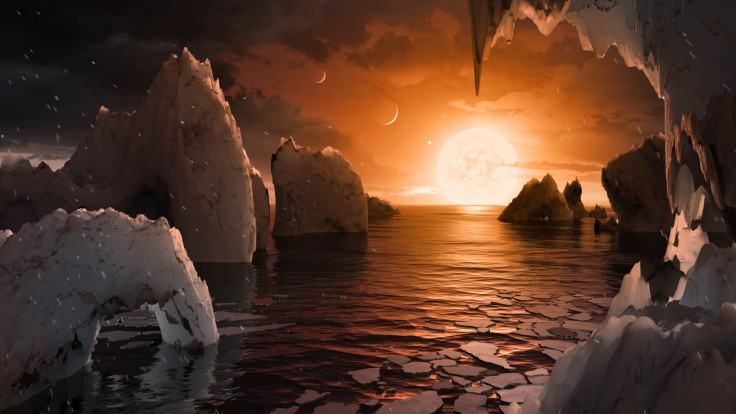Trappist-1: How long would it take to get to the Earth-like exoplanets?
In short, a really long time.
It is always big news when Nasa claims to have found solar systems that could support life – but the latest announcement about seven Earth-like planets in the Trappist-1 system has got us all particularly excited about the prospect of new worlds: likely due to the fact that we are all so sick of this one.
Both Brexit in Britain and the election of Donald Trump in the US saw many liberals look out for exit strategies. Ireland was inundated by passport applications by Britons while Americans have looked across the border to Justin Trudeau's Canada as an alternative as Trump's erratic and divisive stint in the White House gets underway.
Miley Cyrus, Whoopi Goldberg, Bryan Cranston and many other celebrities made public pledges to leave America if Donald Trump was elected president (all are yet to do so). While billionaires buy up land in New Zealand as insurance against the US going completely down the pan. And with far-right parties on the rise across Europe, things are likely to get worse before they get better.
Little surprise, then, that the images of glorious sunsets and undiscovered planets from Trappist-1 have piqued so much interest over the past 24 hours. As the news brings us its usual torrent of rage, war and hate, how many have thought that, actually, Donald Trump, Marine Le Pen, Geert Wilders and Nigel Farage can keep this polluted, war-torn world: we will just move onto the next one.

Sadly, while 40 light years may not seem far – especially given that the possibly habitable Kepler-452b, discovered in 2015, was 1,400 light years from Earth – that still amounts to some six trillion miles.
"A trip to the Moon takes three days – and it takes light one second. So what we can do on our most powerful rocket is what light can do in a second," Tom Kerss, astronomer at the Royal Observatory Greenwich, told IBTimes UK.
"The fastest spacecraft that has been built is disputed, but let's say it is New Horizons: that was designed to be quick and it took 9.5 years to get to Pluto. If we sent that spacecraft to [Trappist-1] it would take 750,000 years to get there."
"But what about warp drive," I hear you roar. Well, Kerss explained that while the Star Trek method of interstellar travel is a useful plot device for sci-fi movies, the world is a long way off the kind of technology that could travel even a fraction of the speed of light – let alone at it.
"We would require a new understanding of physics. Maybe in a century or so, maybe with another Einstein, but with our current understanding warp drive will always be science fiction."
The most that can be hoped for in the short long term is that scientists will be able to study Trappist-1 from afar and perhaps figure out whether there is life on any of the planets. One clue would be oxygen in the atmosphere. Another would be closer study of whether there is water. Amaury Triaud, an author of the Trappist-1 study, said that this could be found out "within a decade".
Then, the process of communicating with our new neighbours will begin. But, again, the distance is a major issue, said Kerss: "Every text message you sent would take four years and to get a reply would take another four years. So it is not conversation in real time."
In the meantime, those considering a move to another planet to escape megalomaniacal leaders and the far-right frenzy will have to think of other ways of preventing earth going to the dogs. Voting, for example...
© Copyright IBTimes 2025. All rights reserved.






















